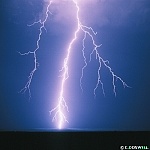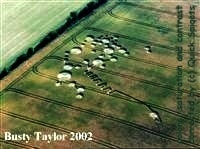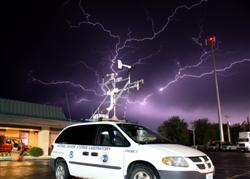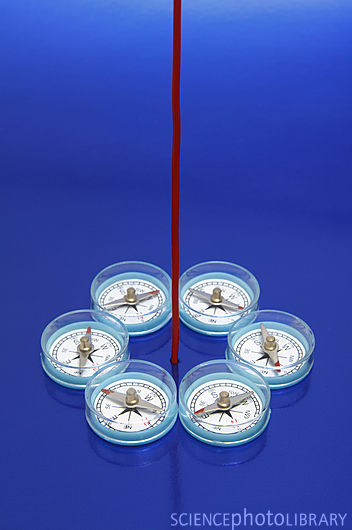Many informations about COVID-19, CORONAVIRUS, how will it spread into population
in many countries, actual COVID-19, CORONAVIRUS GRAPHS, also Perspectives, forecasts, outlooks for the future, epidemic and pandemic prognosis and actual
>>>>>> COVID-19, CORONAVIRUS PREDICTIONS <<<<<<
COVID-19, CORONAVIRUS links to GRAPHS day by day
COVID-19, CORONAVIRUS links to PREDICTIONS day by day
Other interesting COVID-19, CORONAVIRUS summary links and reference pages


Crop circles
Crop Circles, Crop figures, Discharge Localisation
Long quotations (considerably more than only a few sentences) from domain cropcirclesonline.com also translated to any language, would be better publish anywhere with author's permission. Thanks.
Also copyrighted photographs ©cropcirclesonline.com ©quick spigots
Citations allowed, certainly. Name source, please. Also link where possible, thx.
Contact cropcirclesonline@gmail.com or lightningsymbols(at)hotmail.com

If interested, contact cropcirclesonline@gmail.com
Lightning Discharge Localisation
There is no need to write long texts about lightning localisation. The most important information is that the lightning localisation is available and possible. Measured electrically, as a radio signals, and using trigonometric evaluation. Possible accuracy is in meters. Many other informations available. Intensity - in kiloAmperes, for instance 6, but maybe less, but also maybe many more - sometimes much more than 250 000. Polarity, type (CG, CC). If multiplied, than the number and intensity of subsequent discharges.
Realtime EUCLID lightning data map
http://www.euclid.org/links.html
Technology
At the moment the complete network consists of about 140 sensors, contributing to the detection of lightning.
All the lightning data is detected by means of electromagnetic sensors, which send raw data to a central analyzer. The technology involved is provided by Vaisala (Tucson, AZ). Each sensor detects the electromagnetic signal emitted by the lightning return stroke.
This technology uses GPS Satellite signals for time information.
For each lightning stroke the main parameters are recorded, namely the time of event, the impact point (Latitude and longitude), the Current intensity and polarity, and the number of subsequent strokes.
The data of all the sensors througout the network are concentrated in real-time in two Euclid central operational centers. They are computed there immediately to calculate the lightning locations and optimise the data quality. The resulting data are sent in the course of processing to the Euclid service operational center. This leads to a complete picture of lightning activity in real time. All lightning data collected is archived as well for post-storm analysis.
|
Useful links |
|
| LIGHTNING DETECTION | |
| ALDIS - the Austrian Lightning Detection &Network | |
| METEORAGE - Software provider for lightning data handling and manager of the French lightning detection network | |
 |
METEOFRANCE - French Meteorological National Agency - owner of the French lightning detection network |
| BLIDS - "der BLitz Informations Dienst von Siemens", German lightning detection network, owned by Siemens | |
| SCALAR - Slovenian lightning detection network | |
| Instituto Nacional de Meteorologia - Spanish National Meteorological Institute, owner of the Spanish lightning detection network | |
| SINTEF - Norvegian national meteorological institute - owner of the Norvegian lightnnig detection network | |
| The Finnish Meteorological Institute (FMI) - owner of the Finland lightnnig detection network | |
| CESI SIRF - he Italian Lightning Detection &Network | |
| INFORMATION ON LIGHTNINGS AND THUNDERSTORMS | |
| tigger.uic.edu | Lightning Injury Research Program |
| www.lightningsafety.com | National Lightning Safety Institute |
| www.usatoday.com | USAtoday, Newspaper site with a lot of information and links on lightnings |
| bat.nmt.edu | Langmuir Laboratory, US research laboratory on extreme weather and lightnings |
| wwwghcc.msfc.nasa.gov | Global Hydrology and climate Center, an institution of NASA |
| www.spc.noaa.gov | Storm Prediction Center, an institution of NOAA |
| www.nssl.noaa.gov | National Severe Storm Laboratory, an institution of NOAA |
| METEOROLOGICAL CENTERS | |
| www.magmacom.com | Magmacom, links to meteorological sites of all the world |
| www.noaa.gov | NOAA National Oceanic and Atmospherics Administration - USA |
| www.met-office.gov.uk | British Met Office |
| www.meteo.fr | MeteoFrance |
| www.dwd.de | Deutsche Wetterdienst |
| www.meteoswiss.ch | MeteoSwiss |
| INTERNATIONAL GROUPS ON LIGHTNINGS | |
| www.cenelec.org | CENELEC European Commitee for Electrotechnical Standardization |
| www.cigre.org | CIGRE Conseil International des Grands Réseaux Életriques |
| www.ieee.org | IEEE Institute of Electrical & Electronics Engineers |
LearningWhat is lightning? Lightning is the transfer of significant charge between two charged objects. Lightning discharges can occur cloud-to-cloud (C-C), cloud-to-air (C-A), and cloud-to-ground (C-G). Buienradar.nl provides online data on cloud-to-ground lightning. Cloud-to-ground lightning has the greatest impact on our everyday lives. A lightning strike can kill, destroy equipment, start fires, and be responsible for as much as 70% of typical power outages.
Stroke A lightning event proceeds in several stages the first of which called is "Leaders" which you cannot see. These leaders produce a conductive path to ground that is then used for a large discharge of electrical energy. This discharge is called a "stroke". It is the blinding white flash you see followed by the crash of thunder due to the supersonic expansion of the air as it is heated. The first stroke is often followed by another leader / stroke sequence after a few hundredths of a second. Up to 20 or more sequences of a leader / stroke can occur, and this is why lightning appears to flicker.
Flash All of the strokes that occur within one second and within 10 kilometers of the first stroke are grouped together and called a "Flash". This helps group potentially related electrical events into one single event for viewing.
Real-time Real-time means the processing of information as it arrives at a central point. A process that does not proceed in "real-time" would perhaps store information before operating on it. In lightning detection systems, the lightning data is communicated from a sensor to a central processing point.
Projection The earth is roughly a sphere. To view the spherical earth on the flat screen of a monitor requires a bit of fancy math called a projection.
Time-Zone The www.buienradar.nl web site supports all of the major time-zones across Europe. Lightning Observer, Lightning Explorer and Lightning Advisor all utilize the Time Zone variable that you can enter during the subscription process. For a good discussion on time-zones click here.
Acronyms EUCLID - European Cooperation for Lightning Detection BLDN - Benelux Lightning Detection Network CELDN - Central European Lightning Detection Network |
Basic parameters of "normal, classic", average lightning (negative, cloud to ground).
| Stepped leader | |
| Step length Step length | 50 m |
| Time interval between steps | 20 - 50 μs |
| Step current | >1 kA |
| Step charge | >1 mC |
| Average propagation speed | 200 klm / s |
| Overall duration | 35 ms |
| Average current | 100 - 200 A |
| Total charge | 5 C |
| Electric potential | ~ 50 MV |
| Channel temperature | ~ 10.000 K |
| First Return Stroke | based on measurements at the lightning channel base. |
| Peak current | 30 kA |
| Maximum current rate of rise | >10 - 20kA / μs |
| Current risetime (10 - 90 %) | 5 μs |
| Current duration to half-peak value | 70 - 80 μs |
| Charge transfer | 5 C |
| Propagation speed | 100 - 200.000 klm / s |
| Channel radius | ~ 1 - 2 cm |
| Channel temperature | ~ 30.000 K |
| Dart leader | |
| Duration | 1 - 2 ms |
| Charge | 1 C |
| Current | 1 kA |
| Electric potential | ~ 15 MV |
| Speed | 10 - 20.000 klm / s |
| Channel temperature | ~ 20.000 K |
| Dart-stepped leader | |
| Step length | 10 m |
| Time interval between steps | 5 - 10 μs |
| Average propagation speed | 1 - 2.000 klm / s |
| Subsequent Return Stroke | based on measurements at the lightning channel base. |
| Peak current | 10 - 15 kA |
| Maximum current rate of rise | 100kA / μs |
| 10-90 percent current rate of rise | 30-50 kA / μs |
| Current risetime (10-90 percent) | 0.3 - 0.6 μs |
| Current duration to half-peak value | 30 - 40 μs |
| Charge transfer | 1 C |
| Propagation speed | 100 - 200.000 klm / s |
| Channel radius | ~ 1 - 2 cm |
| Channcl temperature | ~ 30.000 K |
| Continuing current (longer ~ 40 ms) | About 30 to 50% of lightnings contain currents durations longer than ~ 40 ms. |
| Magnitude | 100 - 200 A |
| Duration | ~ 100 ms |
| Charge transfer | 10 - 20 C |
| M-component | based on measurements at the lightning channel base. |
| Peak current | 100 - 200 A |
| Current risetime (10-90 percent) | 300 - 500 μs |
| Charge transfer | 0.1 - 0.2 C |
| Overall flash | |
| Duration | 200-300 ms |
| Number of strokes per flash | 3-5 (About 15 to 20 percent of lightning flashes are composed of a single stroke). |
| Interstroke interval | 60 ms |
| Charge transfer | 20 C |
| Energy | 109 - 1010 J |
Wheat field - a record of the lightning magnetic field lines
Shocking, perplexing, surprising, difficult to believe, but also eye-opening similarity
Wheat field - record of magnetic field lines generated by the lightning discharge
Nearly one million Amperes (known school experiments - maximum 20 - 30 Amperes)


Exactly at the moment of the lightning discharge flow through corn stalks induced and conducted (ionized air, corona discharge) electric currents. Thanks to that stalks and other plant parts may exhibit electromagnetic properties. They may thus act like magnetized compass needles, and electromagnetic forces are momentarily deflecting them to the ground in a clockwise or counterclockwise direction, depending on the relative ratio, direction and phase difference of the passaging electric currents. Temporary mechanical changes and tensions may also create some meanwhile invisible mechanical damage, oriented in direction. Such microscopic directionally oriented damages are able by gradual growing of damaged tissues later cause gradual directionally oriented bending of all stalks in one direction (CW or CCW). Magnetic fields of an average lightning discharges are at least ten thousand times stronger than that of Earth's magnetic field. Another part of the work may be performed by enormous electrostatic forces thanks to that leaves and stalks of plants behave like leaves and stalks of electroscopes. Diameters of the circles approximately represent the range of the lightning discharge electromagnetic forces. In addition to all that, however, the crop pattern occurs at least several days, sometimes up to several weeks after the lightning hit. It is because the affected plant tissues weaken very slowly, due to huge inertia and consequently very slowly ongoing changes in plants (EPP, Chronology). Because sometimes on the locality may take place very complex interferences and resonances, it may sometimes create a very intricate pattern. A single lightning discharge radiates energy to which the electric locomotive would travel thousands kilometers. Average (!) Discharge. (simplified explanation)
It was one of the greatest Natural joke - mystification, clever trick, by that was the Mother Nature kidding the whole perplexed mankind hundreds, thousands years.
With mentioned ideas is possible not agree, also possible protest against them, but it maybe really all that is possible to do with it or against it. So called Jerry Cimrman's postulate.
some brief information pages:
Crop Circles, another international Crop Circles - Kornkreise
If interested, contact cropcirclesonline@gmail.com
Some partial information now may be found for example on certain summary pages. Crop Circles - understanding is now mainly one of the most extensive page. Another fairly comprehensive informations may be found on the links from the page Texts. There are links to some published texts. Also some unpublished yet, ie some preview version. Other unsorted tests are placed here. The texts will be of course added continuously.
Some pages or their parts have also been preliminarily committed to publish somewhere else, so the first will appear there, then shortly they will be linked from the page Texts, and after some time will finally appear on the page for which it was intended.
Also, to almost all pages are prepared a series of accompanying photos or illustrative graphics, whether own creation, or "collected works" from the Internet. Such points, for placement of although existing, but still unplaced photos, are in the text very strongly colored thus marked. These are primarily designations for author of the text himself, do finally care to step to place them there. It is a gradual publication of research results. That research lasted for several years, so it will take some time yet. Frequently also happened, that in the course of writing some page was sometimes placed in its paragraphs a text, that should rather be included on another page, but so far has not been copied or moved there.
If interested, contact cropcirclesonline@gmail.com
This page was prepared, and all the facts and theories presented here were very thoroughly, closely and in detail experimentally examined by
Jan Ledecky


